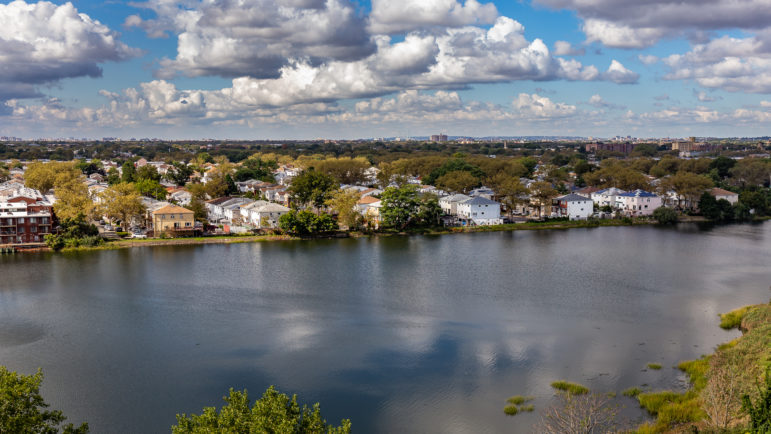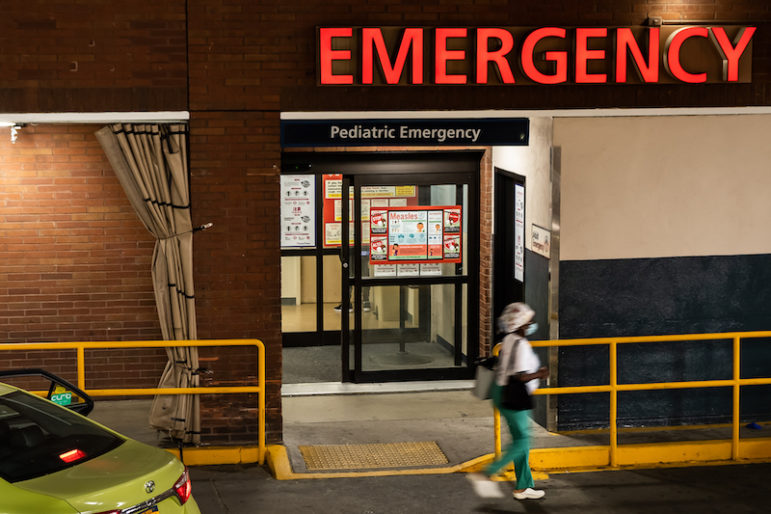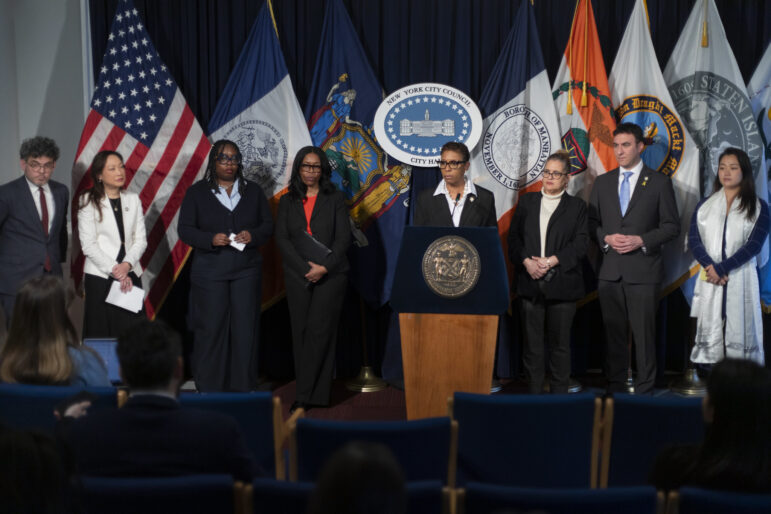As sea level rise and extreme rainstorms increase, the impact of flooding will only get worse if we don’t help New York communities become more resilient. One way to do this is to provide potential homeowners and renters with crucial flood risk information on properties they intend to buy or rent.

Adi Talwar
Neighborhoods like Canarsie face rising flood risks and soaring insurance rates.Flooding is the costliest and one of the most devastating natural disasters. It can have massive impacts, even if there are just a few inches of rain. As experts have reported, the 2020 hurricane season has been one of the most active in recorded history; this is the second time that all alphabetic names for hurricanes have been used up. New York has not come out of this season unscathed, and this should be a call to action.
As sea level rise and extreme rainstorms increase, the community impact of flooding will only get worse if we don’t help New York communities become more resilient. One way to do this is to provide New York’s potential homeowners and renters with crucial flood risk information on properties they intend to buy or rent. As there is no requirement to purchase flood insurance for contents of a property, renters, a large proportion of which are low and moderate income, may be unaware of their flood risk even when located in high-risk areas.
If we give people this information, they will be more prepared when making important and life-changing financial decisions, such as buying a house or renting an apartment. Greater flood risk transparency will encourage more risk-averse behavior and mitigation actions. But unfortunately, today that’s not the case — most buyers or renters don’t know the risk to their property because it’s not disclosed up front.
 CityViews are readers’ opinions, not those of City Limits. Add your voice today!
CityViews are readers’ opinions, not those of City Limits. Add your voice today!
That’s why making the disclosure of a property’s flood history mandatory through the National Flood Insurance Program (NFIP) is crucial as hurricanes and superstorms happen more and more frequently, and especially in such turbulent economic times. Coastal communities depend on well-functioning infrastructure, therefore our community must advocate for an updated flood-ready requirement that is smart and forward thinking. Every $1 invested in disaster mitigation saves $6 in flood damage costs.
There is a one in four chance that your home will be flooded during your 30-year mortgage. Even if you live two miles or more from the coast, you could still be at risk of flooding, and only a few inches of flood water can cause tens of thousands of dollars’ worth of flood damage.
We have been helping assist New Yorkers understand their risk through our FloodHelpNY platform, which was created to help homeowners prepare and mitigate against flooding that is becoming increasingly costly as sea levels rise.
Through our platform, New Yorkers can :
- Find their home on the flood map: More than 400,000 New Yorkers might be affected by the future flood zones.
- Discuss mitigation options and insurance via counseling: In NYC’s flood-prone neighborhoods, 76 percent of homeowners who do not have an elevation certificate are overpaying for flood insurance.
- Lower their risk and their rate: More than 100,000 New Yorkers have turned to FloodHelpNY as a place to learn, take action, and become more flood-safe.
But our platform can only help so many people. Without comprehensive federal action, our current disaster relief and recovery policies will continue to allow and even incentivize risky development, leaving current and future infrastructure in peril.
We need real, extensive reform to the NFIP. This September, Congress passed a short-term extension of the program for the 16th time in the past three years. We need to break this cycle and urge Congress to pass a long-term reauthorization of the NFIP that gives policyholders certainty, and modernizes the program to reduce flooding impacts to the 22,000 communities around the country that participate in it.
Congress should not miss an opportunity to end the patchwork of state laws, which often include little or no requirement that buyers, businesses, and renters are provided with useful, timely information regarding any history of flooding or flooding damages, or requirements to purchase flood insurance, known to a seller or lessor.
A uniform, common-sense national standard for flood risk and history disclosure should be included in any NFIP reauthorization, short- or long-term.
We can protect our community’s economy. As New York increasingly experiences high tide and nuisance flooding throughout the year, our infrastructure currently cannot handle heavy rains, let alone massive storms. By building or rebuilding with resilience in mind we’re protecting communities and saving money. Providing clear flood disclosures is a key step to prepare New Yorkers. We must urge Congress to develop a stronger flood disclosure standard. All of these changes are economically smart and environmentally crucial. Congress must act to reform NFIP to protect our most vulnerable regions.
John Baker is a Senior Data Manager and Cristian Salazar is the Director of Communications for The Center for NYC Neighborhoods.








